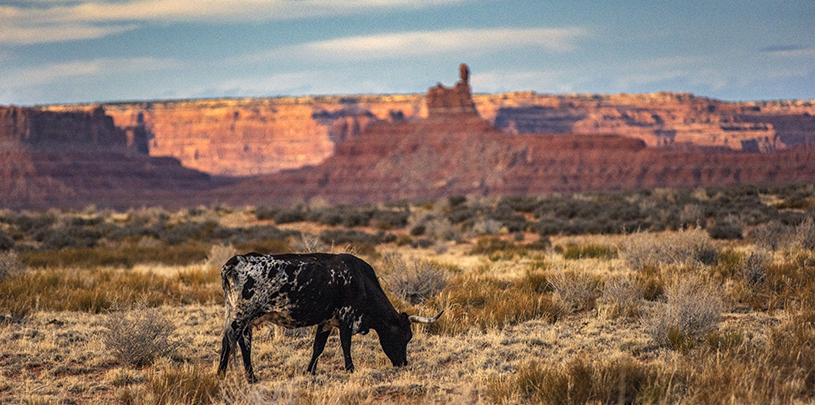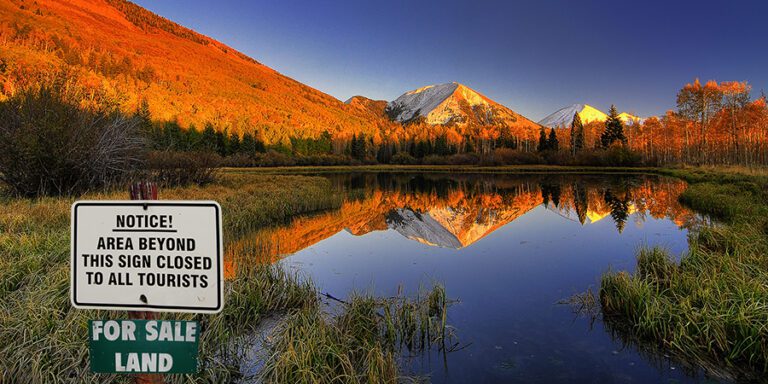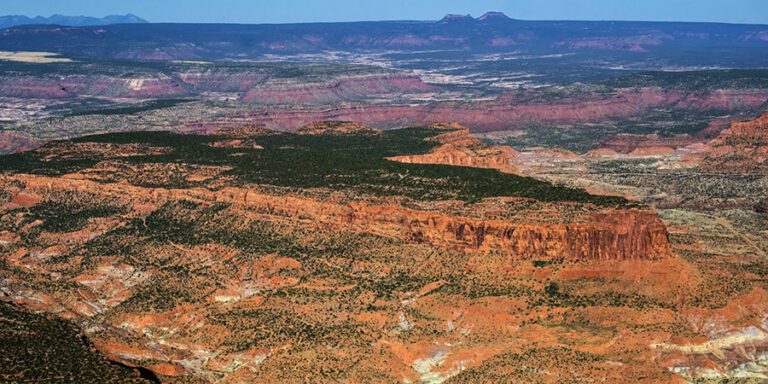
Bears Ears petroglyph panels and cultural sites protected by new proposed management plan.
As the cottonwood leaves began to turn gold in early October 2024, the final proposed plan for how to manage Bears Ears National Monument in Utah was released. The plan is historic, crafted with substantive input from the Bears Ears Commission — a collaborative body composed of five tribal nations (Hopi, Navajo, Ute, Ute Mountain Ute, and Zuni) that advocated for the designation, defense, and restoration of the monument.
Following a protest period (during which anyone who commented can raise concerns with the proposed plan) and a concurrent governor’s consistency review (in which state officials can check to see if the plan is in line with state and county plans), a final record of decision enacting the new plan is expected in early January 2025.
The new Bears Ears plan is just the latest in a series of historic firsts. In 2016, Bears Ears was America’s first national monument protected at the request of sovereign tribal nations. And in 2022, a landmark cooperative agreement between federal land managers and tribes was signed to actualize collaborative management for Bears Ears.
Traditional Indigenous knowledge set to shine

One of the things that makes the Bears Ears plan special, thanks to the tireless work of the Bears Ears Commission tribes, is the incorporation of traditional Indigenous knowledge (including Indigenous science) across all aspects of the plan. Bears Ears represents more than just protection of a cultural landscape; it marks a new era in which the knowledge and experience of Indigenous peoples from diverse traditions is put to work for the benefit of land, water, wildlife, and people.
What else is good about the plan?
Other aspects of the proposed final plan that are worth celebrating include a ban on recreational shooting, which has damaged cultural sites, potentially permanently protecting sensitive landscapes from grazing, and banning activities inconsistent with the monument’s protection like base jumping and geocaching.
The final proposed plan retains all existing areas of critical environmental concern (places specially managed specifically to protect unique and important values, like important historic, cultural, or scenic places, fish and wildlife populations, or other natural systems and processes) and adds a new 86,000-acre aquifer protection and recharge area, recognizing the cultural importance of water.
Target shooting isn’t currently a widespread or popular activity in Bears Ears, and the new plan will keep it that way. Sadly, most accessible petroglyph panels in the monument have already been desecrated by gunfire, and the proposed final plan correctly states that allowing recreational shooting “could lead to health and safety issues as visitation to the Monument increases.” Hunting will still be allowed, and millions of acres nearby remain open to firearms enthusiasts.
Another bright spot in the final plan: it bans chaining, a practice that uproots native pinyon and juniper forests by dragging a ship’s anchor chain across the landscape between two bulldozers, often to make lands more suitable for increased cattle grazing. Aggressive projects like these conducted in the last century have already destroyed countless cultural places in Bears Ears, and it’s a good thing that the new plan bans this devastating practice. The plan also prioritizes using native seeds, a big improvement over planting exotic European pasture grasses for cattle, the norm at Bears Ears in the past.
The final proposed plan also permanently retires monument lands from grazing (should ranchers currently running cows in the monument decide to give up or sell their permits). This gives the land an opportunity to recover from heavy use by cattle, which has destroyed cultural resources and dramatically altered the landscape since European settlement.
Some misses in the Bears Ears plan
Though grazing permits can be retired and some limited areas are to be closed to cattle, 88% of the monument will remain available for livestock grazing, and the number of permitted animals could actually increase from present numbers. Though there are small improvements in protecting new ungrazed areas on Bureau of Land Management lands inside the monument, the Forest Service will make no changes to grazing from its existing 1986 forest management plan for the lands it manages inside Bears Ears.
Other steps backward in the final plan include relaxing recreation management standards for vast swaths of the monument from a more protective “remote” setting to a more permissive “outback” setting, cuts to areas that will be managed to preserve lands with wilderness character, and a considerable increase in the areas available for new rights of way for developments like utilities.
The rubber hits the road
 The Bears Ears buttes, for which the monument is named. TIM PETERSON
The Bears Ears buttes, for which the monument is named. TIM PETERSONThe management plan that’s about to be finalized sets a framework for future decisions that will have long-term consequences, and the Bears Ears Commission will be deeply involved in developing on-the-ground plans for how things like recreation, off-road vehicles, cultural resources, and visitation will actually be managed to protect the monument. Because the entirety of the place itself has enormous cultural significance, this is a task not to be taken lightly.
As these ground-level plans are developed you’ll have a chance to weigh in too, and we’ll ask you to from time to time.
All in all, the release of the proposed plan represents a positive push toward long-overdue tribally inclusive land management. The Bureau of Land Management, Forest Service, and Bears Ears Commission tribes are making history at Bears Ears.
Finally, the recent presidential election promises to shake things up, and it has been reported that “[t]he boundaries of the Bears Ears and Grand Staircase-Escalante national monuments in southern Utah will be immediately redrawn to reflect changes that Mr. Trump made in 2017.” We’ll need your help. Stay tuned.




